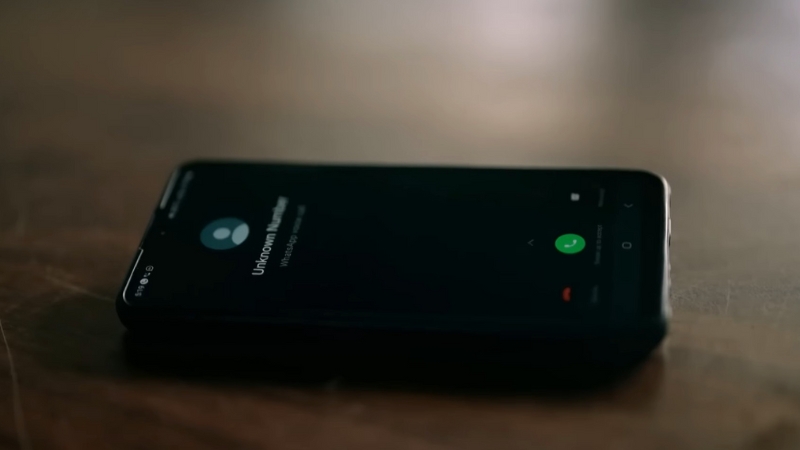Over the past decade, a wave of India-linked fraud operations has cost U.S. citizens billions of dollars, from elderly retirees tricked by fake “IRS agents” to tech investors defrauded by Indian-American entrepreneurs in high finance.
The schemes vary in sophistication; some run out of call centers in Gujarat or Mumbai, others from sleek Chicago offices or rented New Jersey apartments, but they share one theme: exploiting digital reach, weak regulation, and trust across borders.
According to the U.S. Department of Justice (DOJ) and the Social Security Administration (SSA OIG), India-based scammers are now involved in one of the largest categories of transnational financial crimes targeting Americans, rivaling even Russian and Nigerian operations.
From 2013 to 2025, U.S. courts prosecuted dozens of Indian nationals or India-linked networks for money laundering, wire fraud, identity theft, and immigration fraud, leading to lengthy prison sentences and unprecedented extraditions.
Overview of Major India-Linked Scams Affecting U.S. Citizens
| # | Case Name / Type | Period | Key Individuals | Estimated Losses | U.S. Authority Involved |
| 1 | IRS & Social Security Call Center Scam | 2013–2016 | Hitesh Patel, Sagar Thakkar | $300+ million | DOJ, ICE, IRS |
| 2 | India Call Centers Sentencing Case | 2013–2017 | Hardik Patel & team | $250+ million | DOJ, Homeland Security |
| 3 | Multimillion-Dollar Call Center Network | 2014–2018 | Dozens of operators in Ahmedabad | $100+ million | ICE, DOJ |
| 4 | Ohio Money Laundering Conspiracy | 2015–2020 | Pranay Kumar Mamidi, Kishan Patel | $3 million | U.S. Attorney, Ohio |
| 5 | Extradition of Hitesh Patel | 2019–2023 | Hitesh Patel | $230 million | DOJ, U.S. Marshals |
| 6 | U-Visa Immigration Fraud | 2017–2021 | Rambhai Patel | , | USCIS, ICE |
| 7 | Indian Students’ Fraud Ring | 2020–2023 | Kishan Rajeshkumar Patel et al. | $2+ million | FBI, DOJ |
| 8 | Robocall Global Scam | 2022–2023 | Arushobike Mitra, Garbita Mitra | $1.2 million | SSA OIG |
| 9 | Rishi Shah / Outcome Health Fraud | 2014–2019 | Rishi Shah, Shradha Agarwal | $1 billion | DOJ, SEC |
| 10 | Elderly Imposter Scam | 2019–2024 | Undisclosed (Indian national) | $400,000 | DOJ, Illinois District |
1. The IRS & Social Security Call Center Scam
Between 2013 and 2016, thousands of Americans received terrifying calls claiming they owed back taxes or were facing immediate arrest. The calls came from India, but the voices used American names, “Officer Kevin Jones” or “Agent Smith.” Victims were told to send payments via gift cards, Western Union, or iTunes cards.
At its height, the scam pulled in more than $300 million, targeting mostly elderly U.S. citizens. The operation was traced back to several call centers in Ahmedabad and Mumbai, with Hitesh Patel and Sagar Thakkar (alias Shaggy) named as ringleaders.
U.S. and Indian authorities worked together in a rare cross-border crackdown, leading to dozens of arrests and Patel’s extradition to the U.S. in 2020.
This case set a new precedent for India–U.S. cooperation against cybercrime.
2. The India-Based Call Center Sentencing Case
In 2017, an Indian national was sentenced to 20 years in a U.S. federal court for masterminding another massive call-center fraud. These centers impersonated U.S. government agencies and financial institutions, demanding payments for fake debts or promising bogus loan approvals.
The scam affected tens of thousands of victims across 50 states. What made this case unique was the scale of data theft; call centers purchased stolen U.S. identity data from the dark web, then used it to personalize threats. The DOJ called it “a hybrid of psychological and digital warfare.”
3. Multimillion-Dollar Indian Call Center Network

A separate U.S. Immigration and Customs Enforcement (ICE) investigation uncovered dozens of call centers in Gujarat that targeted U.S. citizens between 2014 and 2018.
The operation’s sheer size shocked investigators, hundreds of operators working shifts around the clock, coached to sound American.
The losses exceeded $100 million, and indictments in the U.S. and India followed. This case exposed how easily cross-border labor outsourcing could morph into criminal outsourcing, with the same call infrastructure used for both tech support and fraud.
4. Money Laundering Conspiracy in Ohio
In 2020, two Indian nationals, Pranay Kumar Mamidi and Kishan Vinayak Patel, were convicted in Ohio for laundering millions from scam victims. They were part of a “money mule” network, moving stolen funds through fake businesses and personal accounts.
Their victims included retirees in Texas and Florida who lost their entire life savings. The case was notable for revealing how fraud money was routed, from U.S. bank accounts → Hong Kong intermediaries,→ India. The operation was designed to evade federal tracking by keeping each transaction under $10,000.
5. Extradition of Hitesh Patel
View this post on Instagram
After years on the run, Hitesh Patel, the co-mastermind of the IRS call scam, was extradited from India to the U.S. in 2020. This was one of the first-ever successful U.S. extraditions of an Indian citizen for financial cybercrime, marking a milestone in bilateral cooperation.
U.S. prosecutors said Patel’s extradition “sent a signal to international fraudsters that no border would shield them.” The DOJ estimated total victim losses at over $230 million. Patel eventually pleaded guilty to conspiracy to commit wire fraud and money laundering.
6. U-Visa Fraud: Staging Robberies for Immigration Benefits
Not all scams were digital. In New York, Rambhai Patel, an Indian national, staged fake armed robberies at convenience stores so that “victims” could claim U-Visas, a U.S. immigration status for crime victims.
He was caught after a police review of CCTV footage revealed inconsistencies. The ring had bribed police officers to write false reports, enabling immigrants to obtain U.S. residency. The scheme was described by Homeland Security as a “dangerous abuse of America’s humanitarian visa system.”
7. Indian Students Convicted in U.S. Fraud Cases

From 2020 to 2023, several Indian students on F-1 visas were arrested in states like Georgia, Texas, and California for participating in tele-fraud and money laundering operations.
Among them were Kishan Rajeshkumar Patel and Dhruv Rajeshbhai Mangukiya, who helped route scam funds through student accounts.
Their cases revealed a disturbing pattern: fraudulent recruiters in India using WhatsApp and Telegram to recruit students in the U.S., offering small commissions for transferring money. Many claimed ignorance, but prosecutors pointed out clear evidence of coordination with call centers back home.
8. The Global Robocall Scam
In 2023, two Indian nationals, Arushobike and Garbita Mitra, were sentenced to over three years in federal prison each for their role in a robocall scheme that defrauded elderly U.S. victims. They received more than $1.2 million in stolen funds.
The scam used automated voice messages pretending to be from the Social Security Administration, convincing victims that their “benefits were frozen.” This case was among the first where the U.S. SSA Office of Inspector General directly linked the operation to India-based groups.
9. The Rishi Shah / Outcome Health Fraud Case
Outcome Health founders Rishi Shah, Shradha Agarwal and Brad Purdy decided not to testify in their federal fraud trial. Closing arguments start tomorrow. Jury could get the case by week’s end. https://t.co/612KLhm7Ql.
— John Pletz (@johnpletz) March 27, 2023
Not all Indian-origin scams came from call centers. Rishi Shah, a U.S.-born Indian-American entrepreneur, raised over $1 billion from investors, including Goldman Sachs and Alphabet, for his startup Outcome Health, which installed ad screens in doctors’ offices.
Shah and his COO, Shradha Agarwal, were found guilty in 2023 of inflating ad metrics and revenues to defraud investors. While not India-based, the case became emblematic of how Indian-American executives also appear in U.S. corporate fraud headlines, contrasting with the offshore scams, but driven by the same mix of ambition, deception, and access.
10. The Elderly Imposter Scam
An Indian national living illegally in the U.S. was sentenced to 12 years in prison for an impostor scam that stole over $400,000 from senior citizens across Illinois, Missouri, and Texas.
He posed as a government agent, threatening arrests unless victims wired money. Investigators uncovered links to a larger India-based operation that sent money mules to collect funds directly from victims’ homes. This hybrid method, blending phone, courier, and intimidation, has become a growing concern in both countries.
Bottom Line

Transnational fraud has evolved into a borderless economy of deception, one that often links low-cost Indian call operations with unsuspecting U.S. victims.
In early 2024, the CBI raided a major call center racket in Maharashtra that targeted citizens in the U.S. and Canada, exposing just how organized and lucrative these scams have become.
The good news is that U.S.–India cooperation on extradition, cybercrime tracking, and digital evidence sharing has improved sharply since 2018.
Yet, experts warn the next generation of scams may not rely on phone calls but AI voice cloning, deepfake identities, and crypto wallets.

